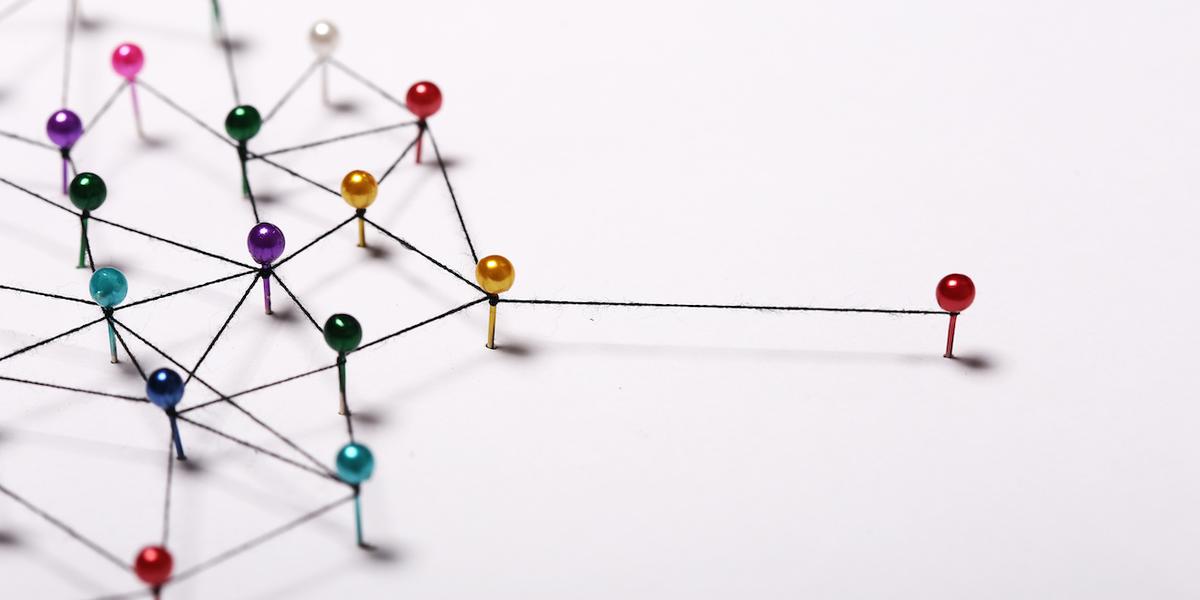Perspectives: Connected to COVID-19
Network science reveals critical caveat in gathering size recommendations

Network science reveals critical caveat in gathering size recommendations
Remember health class when you learned about STDs — whenever you sleep with someone, you become connected to everyone else they’ve ever had sex with? Some reading this will be familiar with “Bacon’s Law,” which states that any two people are connected to each other by six (or fewer) acquaintances, or “degrees of separation.” Movie buffs play this, seeking the shortest path among movies from any actor to a movie with the actor Kevin Bacon. We are scientists who use math to study how disease moves through groups, and we can guarantee that coronavirus is just a few degrees of separation — or less — from each one of us.
Our urgent message to you, as you become antsy from the isolation of social distancing over the coming weeks or longer, is this: limiting the number of people you co-mingle with at a given time is not enough to truly slow the spread of this disease. Radically reducing the total number of people you contact through time will increase our community’s “degree of separation.” This is the most powerful tool we have right now to keep the COVID-19 pandemic from overwhelming our medical systems.
Limiting the number of people you co-mingle with at a given time is not enough to truly slow the spread of this disease. Radically reducing the total number of people you contact through time will increase our community’s “degree of separation.”
The CDC recommends gatherings of fewer than 250 people or 10 or fewer people in high-risk groups where there is moderate spread, but even spending time with different small (less than 10) groups on different days (children’s playdates, pickup basketball games, etc.) will continue to amplify spread, something like this:
Here, each circle represents a person (colored according to their infection status), and each line represents an interaction between two people. On the right, you see the rate that infection spreads through the population.
If everyone surrounds themselves only with individuals from a singular small group, like roommates or immediate family, over the coming weeks — and quite possibly months — we can dramatically slow disease spread, because our community is less connected:
Now, make a list of everyone you have shared a space with over the last 14 days. If this number exceeds even 10, you are connected to a vast extended network, helping COVID-19 rip through your interconnected community much like this:
With these models in mind, consider the effect on network connections of children going to school, interacting, and returning home, and you can see why extended school closings are crucial.
And remember: shared surfaces can act like germ time capsules, retaining the virus for hours to days, invisibly increasing connections among individuals. This means small, but rotating groups in the same space (yoga classes, gym equipment) will continue to boost disease spread.
Facing what may be extended isolation to combat this virus is no small task, and seeing even 3,000 cases in a metro area of 3 million makes the press about this disease sound overblown. Case numbers also disguise the reality that each individual diagnosed today likely infected two or three others, who will infect two or three others, and so on during the one to two weeks before any of them experience symptoms. Because of this, even if every household adhered to strict social isolation, the number of cases and deaths will continue to grow for a few weeks before we see any slowing.
Even if every household adhered to strict social isolation, the number of cases and deaths will continue to grow for a few weeks before we see any slowing.
Add to this that many people have retained some social contacts, have not isolated themselves at all, or have grown frustrated with the costs of social isolation and resumed contacts. Some have even taken to the streets in (unmasked) protest. So, the spread continues, increasingly impacting every corner of society. Even a state with a population of five or six million people, like Minnesota or Maryland, likely has tens of thousands of infected individuals today, most of whom do not know they are infected or will not be tested to confirm infection because testing remains limited.
EMTs, doctors, nurses, and people providing other essential services necessarily increase connections among people in our communities. If the rest of us strictly limit contacts, we create a higher “degree of separation” in our community, so people in indispensable roles can do their jobs and our community can also keep disease spread under control.
Reducing group size alone will not curb this pandemic. Even when we return to work, minimizing everyone’s number of in-person interactions through time is critical. Will you increase your community’s degree of separation to #FlattenTheCurve?
Elizabeth Borer, PhD, professor, Department of Ecology, Evolution and Behavior, College of Biological Sciences
Meggan Craft, PhD, associate professor, Department of Veterinary Population Medicine, College of Veterinary Medicine
Matthew Michalska-Smith, PhD, post-doctoral researcher, Department of Veterinary Population Medicine, College of Veterinary Medicine
Eric Seabloom, PhD, professor, Department of Ecology, Evolution and Behavior, College of Biological Sciences,
Lauren White, PhD, post-doctoral research fellow, National Socio-Environmental Synthesis Center, University of Maryland, College Park
Editor’s note: The views expressed here are those of the authors and not necessarily of the University of Minnesota College of Veterinary Medicine. We present them here to further discussion around topics related to veterinary medicine that our faculty, staff, and students find important and worthy of deeper contemplation. We encourage you to send responses to cvmcomm@umn.edu.